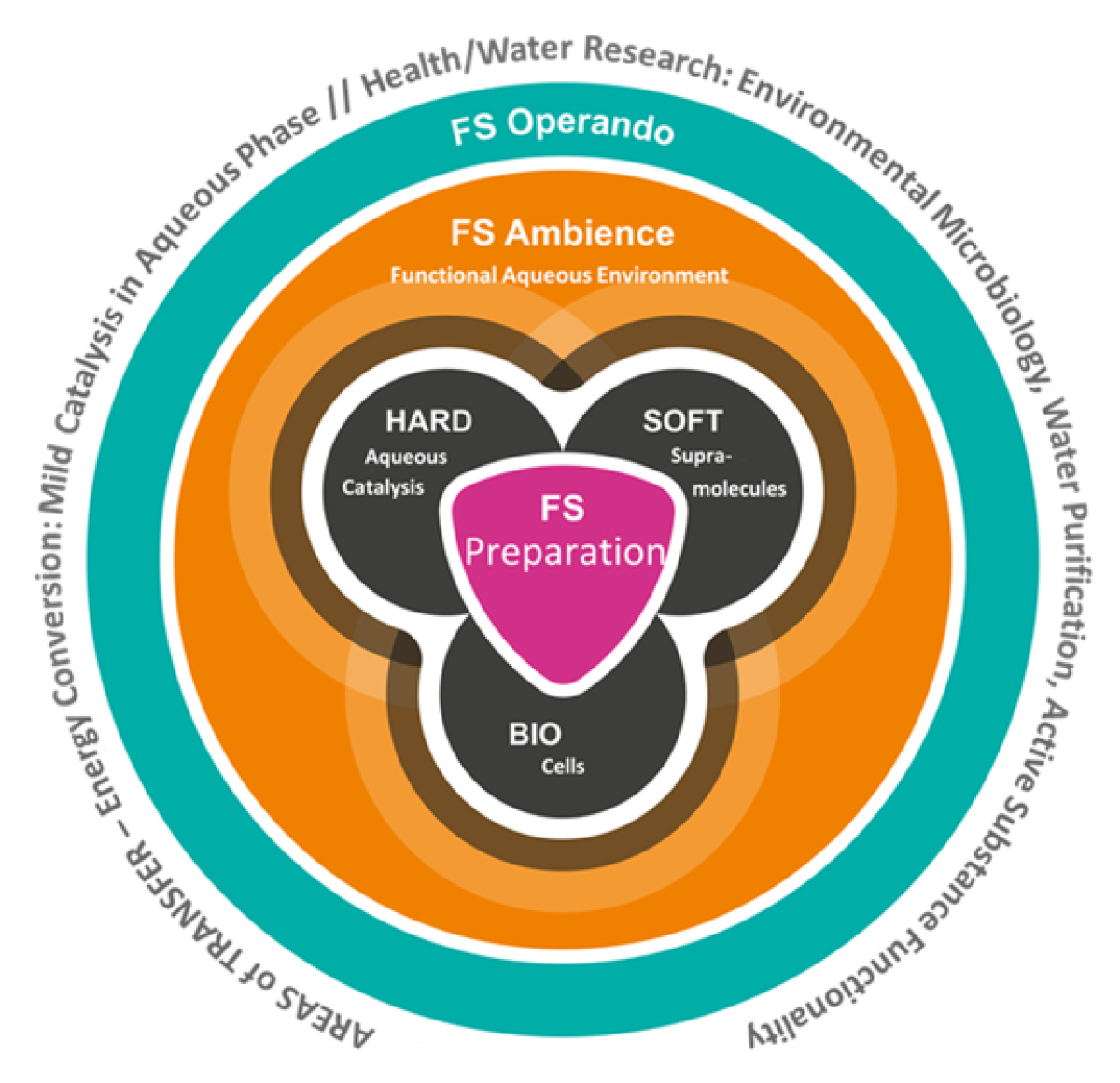ACTIVE SITES
The research center ACTIVE SITES has been created as a platform for scientists with common research interests, in the field of interdisciplinary development of methods for the characterization of active sites in an aqueous functional environment.
Active sites are of enormous relevance for chemical and biological processes and play a key role in many technological areas – from chemical energy conversion to water purification. The deficit in understanding the active centers, especially in the aqueous functional environment, is still considerable. For example, “mild” conditions in catalysis can often only be meaningfully implemented in the aqueous phase.
This requires the development of preparation conditions and measurement arrangements for the analysis of active centers, which includes the sophisticated adaptation of the methodology to the aqueous functional environment (in ambience) as well as online and downstream characterizations of active centers (operando).

The development of instrument-analytical methods that characterize transport and reaction on different length and time scales promises a considerable potential for the creation of knowledge. In addition, the analytical clarification of the active sites requires precise preparation and arrangement of the examined models. Both together lead to knowledge-driven method development and thus to the optimization of the active sites in close cooperation with scientists from chemistry, biology, physics and engineering.
Moreover, combinations of methods by technically coupling the related instruments via measurement cells show high potential for the description of catalysts, ligand-biomacromolecule complexes, and individual biological cells, whereby the functional environment includes aqueous reactants and biofluids up to (micro)biological cell communities.
This overarching research idea on method coupling is aligned with the three concentric research areas (cf. graph) “preparation”, “ambience”, and “operando”.

